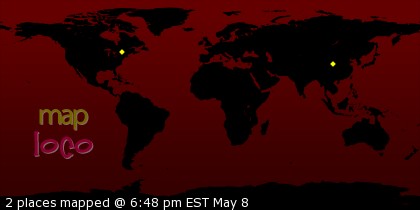Outline, a personal lexicon:
Sketch/Brainstorm: When I have a new idea for a story I always write it down in brief and tag on ideas for expanding the idea into something with a plot, characters, and fully realized setting. This can run anywhere from three sentences for a short or poem to two or three pages for a multi-book idea. I have hundreds of these in my ideas file, including probably 30-40 novel outlines sufficiently fleshed out to start writing.
Working: When I actually start in on a new project I take the sketch outline and expand it to something that gives me a good idea of the first third of the story, a rough idea of the middle bits and a good handle on the ending. How much work this is depends on how fully fleshed out the sketch outline was. This will typically run around 3-5 pages and include notes to myself along with the narrative paragraph blocks--things like "establish ruthlessness in dialogue here," or "she will return in book two as a ghost."
Timeline: In order to keep the days of the week, dates, moon phases, holidays, etc. organized, I almost always create a timeline for each novel with important events attached to specific days and dates and sometimes times of day or other time indicators. I do this both for the arc of the story and for historical and future events relative to the story. That last part is where it becomes more like other outlines as I use this as another type of sketch/brainswtorming tool.
Ongoing: As I'm writing, I constantly update the working outline with ideas for upcoming bits of business, plot points, character nuggets, and magic system chunks. At some point, generally when I hit the point where the working plot goes all sketchy I will sit down and lay out a chapter-by-chapter scene-by-scene outline for what happens from there to the end of the book. This can run as much as 30 pages single spaced.
Length: This is a specialized form of ongoing outline. By the time I move to the ongoing outline I generally have a very good idea of the book's natural chapter length which can vary widely depending on all sorts of factors including number of POV characters, type of POV, and target audience--I generally write shorter chapters for YA. What this allows me to do is take my ongoing outline and figure out how long the book is likely to be based on chapter length and how much material needs to go into each chapter and scene. More importantly, it allows me to add or subtract story elements to help me achieve a target length--I'm usually within a thousand words of target length when I finish a draft. Since writing to length can be very important to editors and for specific markets, this is an enormously valuable tool and simple to use. Do I have too many chapters? Collapse some scenes and ideas together. Do I not have enough, open some scenes out into full chapters or add others to achieve effects I hadn't thought I'd have room for.
Narrative/Proposal/Pitch: This is largely a sales tool, though I also use it to do brainstorming/sketch work for books that are part of a proposal but not yet written. These have to have a very specific form and often have set lengths--particularly for newcomers to the field. They can run from 1-5 pages either single or double spaced depending on submission guidelines and they must be in present tense (with the exception of quoted material from the book). They also can't keep secrets.
I've got a proposal in with the Loft to teach a course built around the book proposal and pitch with an emphasis on outline, and I might talk more about it if I write The Spanish Exposition-Outlines (Part III).
In the interim, I'm sure there are other uses for an outline, but I'm done for the moment. Please feel free to add comments or ask questions.
Wednesday, March 28, 2007
Subscribe to:
Post Comments (Atom)





3 comments:
Holy crap are you organized.
That's interesting. My (for now, as I'm still figuring how these things work) methods sound very similar to the working and ongoing outlines.
I think the length outline sounds like the sort of thing where some writers use a spreadsheet for the wordcount, or is that just weird?
Erik,
Yeah, I'm kind of a control freak about my work.
Fate,
It might serve a similar purpose to the spreadsheet*, but the method is slightly different. I actually started my conversion from working to ongoing for the next WebMage book yesterday and after I inserted the next two big chunks I knew I had to parse the outline by chapter for length because it felt too short.
What I do when I do this is read through the upcoming material and project chapter breaks at points that taste about right for a chapter by length and tension.
I came up about 30,000 words short and had to expand two major scenes and insert some more new stuff to get a closer aproximation to enough story. This is all projected rather than completed, of course, and I'll adjust as I go.
*on spreadsheets. I know a few people who use them as tools to lay out the novel and figure out how long it's going to be and things like that, but more often I've seen them used to track and project word count/production over time than to map that information onto the length of a specific novel.
There are 1,001 ways to do this and every one of them equally right.
Post a Comment